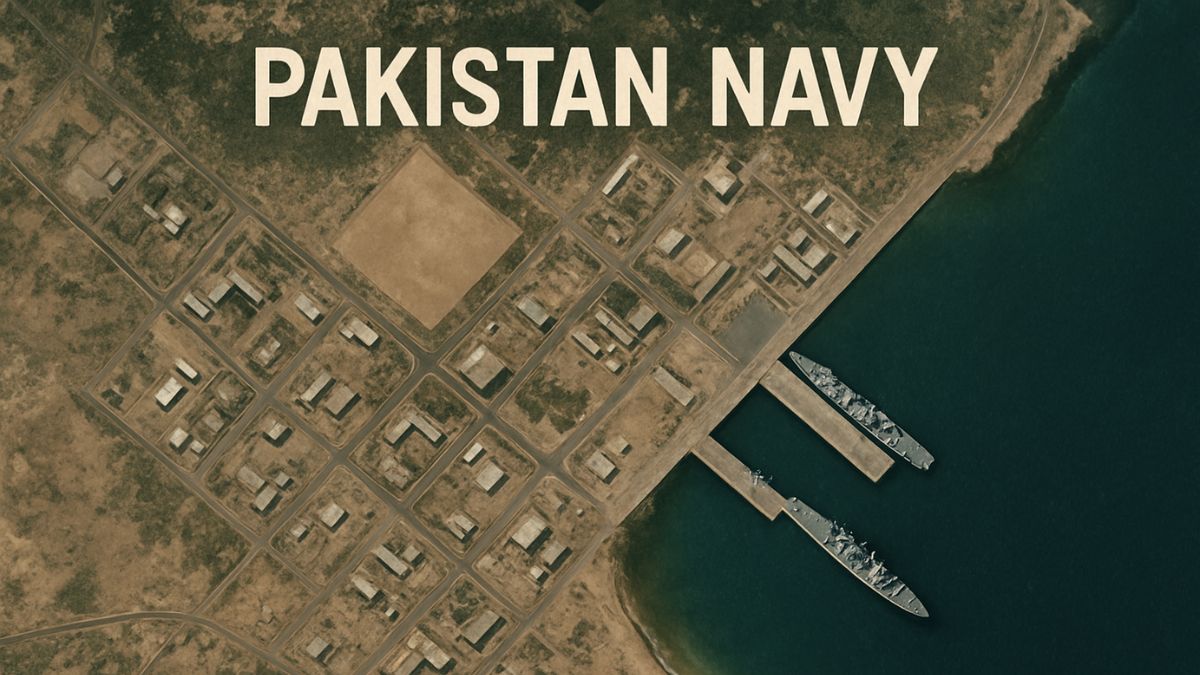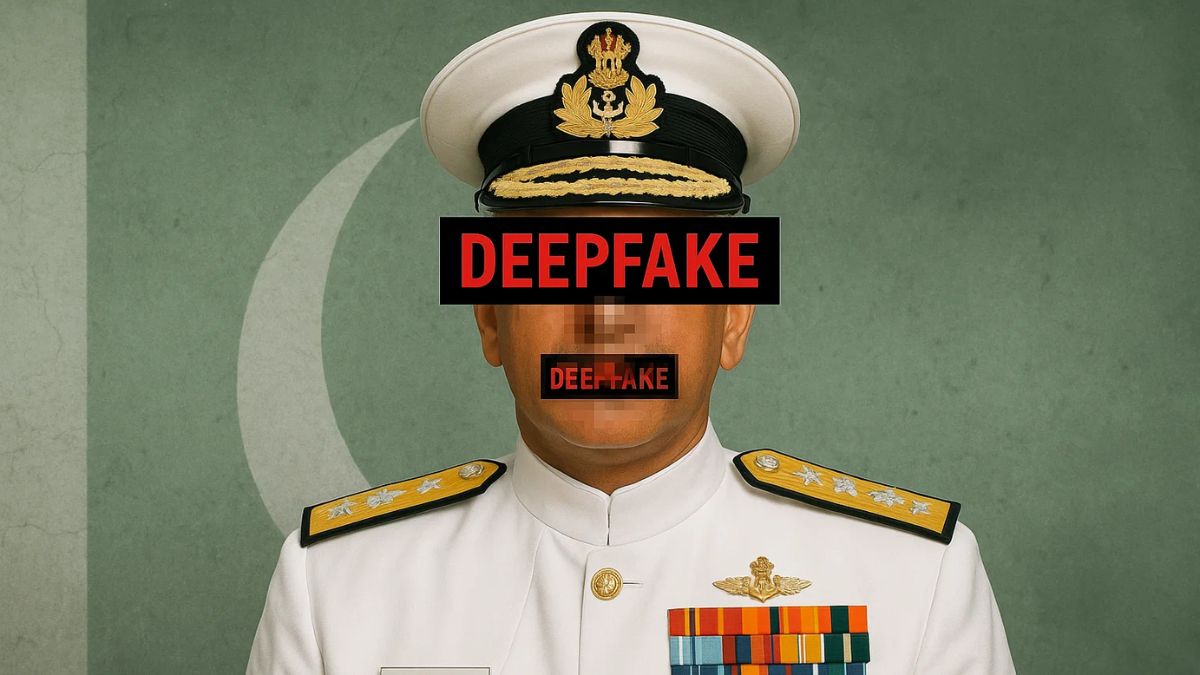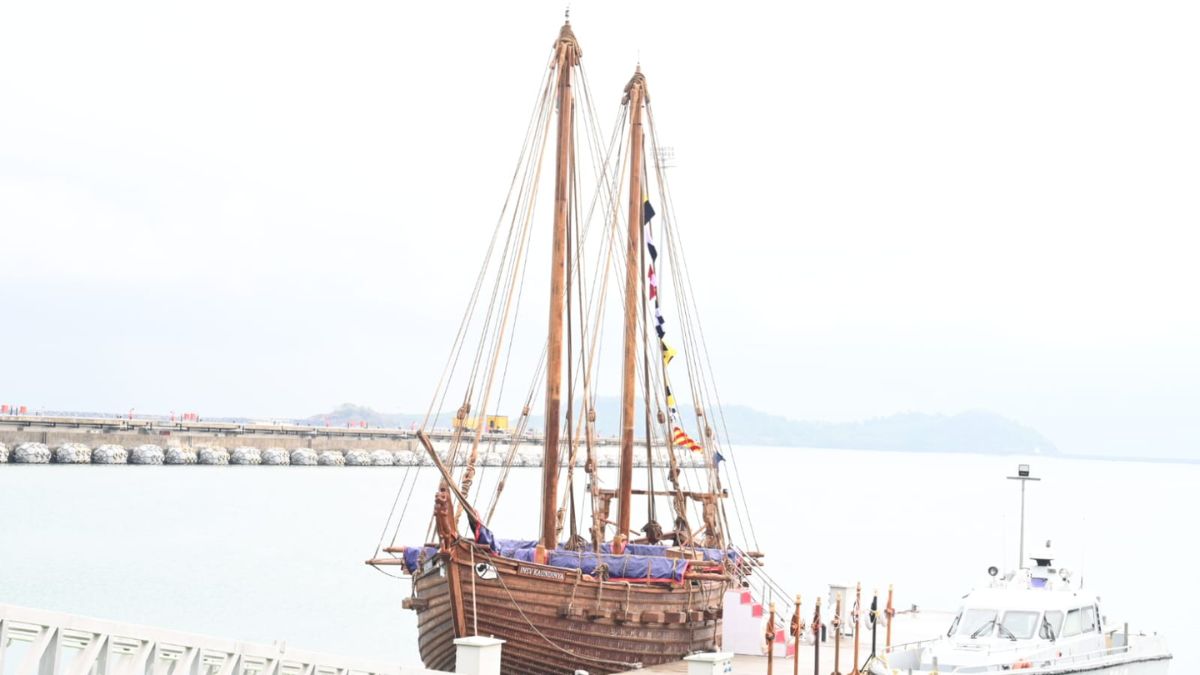Op Sindoor: While Indian Warships Advanced, Pakistan Navy Warships Took Shelter

At the peak of the conflict, Pakistan Navy (PN) warships were shifted out of their naval dockyard at Karachi (Image courtesy: AI pic)
The Arabian Sea has always been a stage for power plays between India and Pakistan, two neighbours who have been in a constant fight since their independence. But in May 2025, as Indian strikes hit terror hubs across the border, that theatre of conflict took on a strange, almost ironic twist.
Around a fortnight after the deadly April 22 Pahalgam terror attack on the intervening night of May 6-7, the skies over Pakistan and Pakistan-occupied Jammu & Kashmir saw flashes of Indian precision strikes. In the military strikes codename ‘Operation Sindoor’, Indian Air Force hit 9 terror-linked sites.
Within hours, New Delhi picked up the hotline to Islamabad’s Director General of Military Operations and delivered a short message that the mission is complete. Across the border, Pakistan’s leaders struck a defiant pose. They warned that retaliation would be swift and punishing.
Yet, away from the microphones, in the quiet docks of Karachi and Gwadar, a different story was unfolding. Satellite pictures of Karachi and Gwadar ports showed Pakistan Navy retreating into cover. The images were analysed by India Today’s Open-Source Intelligence (OSINT) team.
What was Pakistan Navy’s defensive move during Op Sindoor?
Karachi is the lifeline of Pakistan’s navy. Normally, its dockyards bristle with frigates, destroyers, and patrol craft. But in the first days of Operation Sindoor, satellite photographs showed an absence of the warships. The naval dockyard there lay bare, without any signs of the frigates.
These warships were instead, seen squeezed into Karachi’s commercial cargo terminals, parked almost sheepishly next to container ships and cranes. Some of these included frontline vessels like PNS Alamgir, a Babur-class corvette, and a Damen Offshore Patrol Vessel. These ships seemed just an arm’s distance away from the reach of civilian freighters being loaded with containers.
Did Pakistan’s Navy indicate poor planning?
“Given that our attack on the terrorist infrastructure occurred on 07 May and that all the three arms of the Pakistani forces should have been on full alert, to see front line Pak warships still in harbour speaks of their low operational readiness,” said Vice Admiral SC Suresh Bangara (Retd.), who had once led Indian ships into Karachi during the legendary 1971 raid.
To see frontline ships still in harbour shows shockingly poor readiness, he added. The admiral also pointed out a pattern between Pakistani Navy ships docking at commercial terminals and Pakistan using the cover of commercial aircraft during the operation. “Berthing them in the commercial port area is a sign of hoping to evade missile attacks.”
Coupled with similar action of flying their Military aircraft in close proximity of commercial flights it shows their propensity to sacrifice their civilian assets, he told India Today.
Gwadar: How a port was turned into a bunker?
600 kilometers west, Gwadar is usually quiet and often struggling for commercial activity. But during the initial days of Op Sindoor, the port became alive with naval hardware. Gwadar’s empty cargo yards now lined with warships. By May 10 (the day a ceasefire was announced), there were 2 Zulfiquar-class frigates, 2 Tughril-class frigates, Pak navy’s lone Oliver Hazard Perry-class frigate, and 2 patrol vessels were docked there.
Only months earlier, Pakistan had paraded its new P282 ship-launched ballistic missile, boasting of “indigenous” design and “pinpoint” strikes. Yet when Operation Sindoor began, the navy that flaunted missile tests on video seemed unwilling to test itself at sea.
“Gwadar, bereft of commercial activity was the wrong choice to berth front line ships which stick out prominently. It would appear that the only force at sea were their submarines,” observed Vice Admiral (Retd.) Bangara.
What leverage India had as Pak struggled at the sea?
It wasn’t just the ships, Pakistan also seemed to have a submarine problem. Several submarines were undergoing repairs and refits, thinning the fleet at a time of crisis. India, meanwhile, had sent its newest pride, INS Vikrant, the country’s first indigenously built aircraft carrier, on its maiden combat deployment.
INS Vikrant’s movement showed the kind of leverage New Delhi was exerting, noted Damien Symon, a geo-intelligence analyst at Intel Lab. With India posturing toward Karachi, Pakistan preemptively scattered its ships, a defensive move dressed up as prudence.
While Pakistan’s ships clung to berths, Indian Navy remained in forward posture. “We were fully ready to strike Karachi or other selected targets, at sea and on land, at a time of our choosing,” underscored Vice Admiral AN Pramod during a May briefing.
The Pakistan Navy has little say in a joint structure dominated by the Army. On the other hand, India executed a seamless tri-service operation. Every objective was achieved, despite New Delhi firing a single missile from the sea. As Defence Minister Rajnath Singh said, Operation Sindoor has only been paused!







